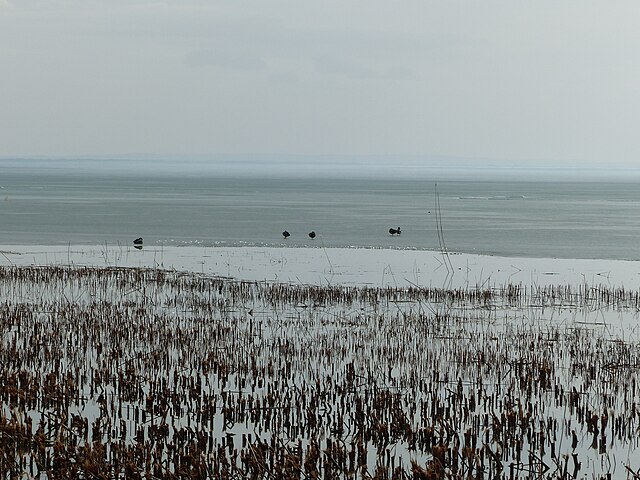Rotten ice is a loose term for ice that is melting or structurally disintegrating due to being honeycombed by liquid water, air, or contaminants trapped between the initial growth of ice crystals. It may appear transparent or splotchy grey, and it is generally found after spring or summer thaws, presenting a danger to those traveling or spending time in outdoor recreation. The increase of rotten ice vs. solid ice in the Arctic affects ocean-atmosphere heat transfer and year-to-year ice formation, as well as the lives of the Inuit, sea mammals such as walrus and polar bear, and the microorganisms that live inside the ice.
Rotten Ice Melting on Lake Balaton
Candle ice in Lake Otelnuk, Quebec, Canada
Ice is water that is frozen into a solid state, typically forming at or below temperatures of 0 °C, 32 °F, or 273.15 K. As a naturally occurring crystalline inorganic solid with an ordered structure, ice is considered to be a mineral. Depending on the presence of impurities such as particles of soil or bubbles of air, it can appear transparent or a more or less opaque bluish-white color.
An ice block, photographed at the Duluth Canal Park in Minnesota
This iceberg can stay afloat in spite of its size because it is less dense than water
So-called feather ice on the plateau near Alta, Norway. The crystals form at temperatures below −30 °C (−22 °F) and contain a lot of trapped air, making them light enough to be supported by the thin branch
Frozen waterfall in southeast New York






